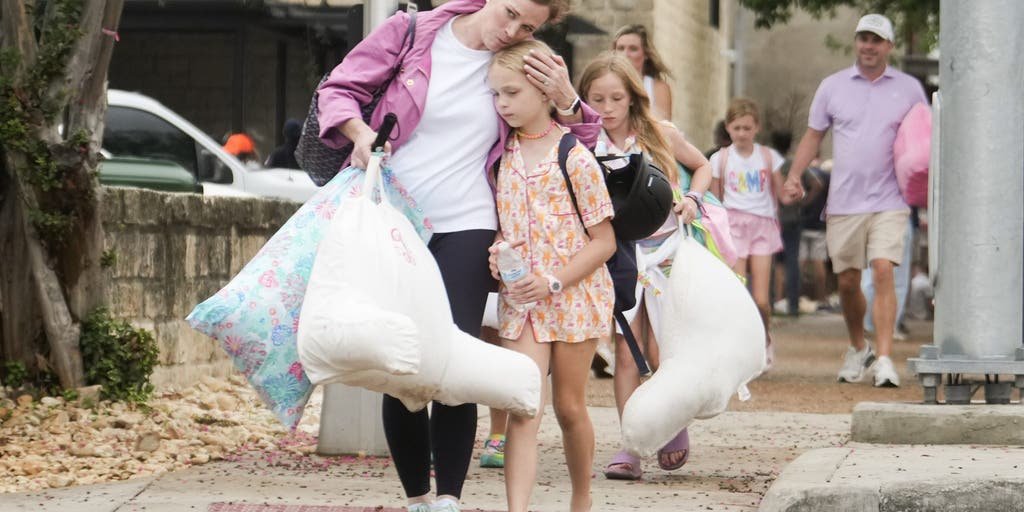Heartbreak in the Heart of Texas: Catastrophic Flooding at Camp Mystic
The sun had barely risen on July 4, 2025, when the tranquil Guadalupe River in Kerr County, Texas, transformed from a meandering stream into a catastrophic torrent, overwhelming Camp Mystic, a summer refuge for girls. Just days earlier, laughter and the sound of splashing water filled the air as young campers reveled in their holiday break. Now, the echoes of joy have been replaced by fears, despair, and emergency sirens, as families await news of missing children, their hearts gripped by the unthinkable.
A Devastating Turn of Events
According to the National Weather Service, the Guadalupe River surged from over three feet to nearly 35 feet within hours due to the remnants of Tropical Storm Barry. The suddenness of the flood caught many by surprise, particularly the campers, many of whom were as young as eight years old. Parents had entrusted their daughters to a setting meant for fun and growth, only to be met with a nightmare.
“This rapid rise is unprecedented,” explained Dr. Maria Gonzalez, a climatologist at the University of Texas. “Studies indicate that extreme weather events are becoming more common due to climate change, and Texas is experiencing the brunt of it.” Gonzalez pointed out that the frequency of such drastic weather shifts poses significant risks to communities along vulnerable waterways.
More than 58 victims have been identified, including several young girls, as rescue teams worked tirelessly through treacherous conditions. Among the missing are Lila Bonner and Eolise Peck, whose families confirmed devastating news of their loss to local media. “We had planned for them to come home this week,” said Lila’s mother, tears in her eyes. “Now, we’re just praying for miracles.”
The Toll on a Community
The aftermath of the flooding has left entire neighborhoods in ruin and communities deeply shaken. Kerr County Sheriff Larry Leitha reported ongoing search operations, with emergency responders tirelessly working to locate the remaining campers. As of Sunday, 11 girls from Camp Mystic remain unaccounted for, while grieving families wait with bated breath for updates.
- 59 confirmed victims, including 21 children
- Ongoing search efforts by 1,300 state responders
- More than 900 vehicles involved in rescue operations
“The pain is palpable. People are heartbroken at what this flooding has taken from us,” remarked local pastor Mark Thompson, who held vigils for victims as residents gathered amidst the wreckage. “Churches are stepping in to provide support; we’re here for one another.” The sentiment is echoed across Kerrville, where communities have mobilized to lend assistance.
Emerging Voices: How Could This Happen?
As the community grapples with the tragedy, researchers are calling attention to broader systemic issues. Dr. Evelyn Rhodes, an environmental policy expert, stated, “This event emphasizes the urgent need for climate adaptation strategies in Texas. Buildings and campsites near bodies of water must implement more robust safety measures.”
Rhodes highlights the necessity for improved infrastructure, emphasizing the importance of flood education. “Educating campers and other vulnerable populations about immediate evacuation routes can save lives,” she explained.
The Human Element
The emotional impact on families and friends is immense. Reports circulate about children who repeatedly ask for their missing peers, some even showing symptoms of trauma. A young girl named Mercy, whose friends are among the missing, stated, “I just miss them so much. They should have been here, safe and happy.”
In a statement, Texas Governor Greg Abbott announced the state’s commitment to ongoing disaster relief. “We are allocating resources to ensure safety and help families recover from this disaster,” he stated, but the healing process will undoubtedly be lengthy.
Sara Kendrick, mother of a girl set to attend Camp Mystic, shared her heartache with local media. “They look forward to camp all year. It’s a safe space where they can make everlasting memories, not face life-threatening situations.”
Despite the grim reality, communities have begun the healing process, driven by resilience and collective support. As families gather to mourn, they also share stories of hope and unity. The age of technology plays a role too; families use social media to share updates and connect with one another, a digital lifeline that transcends physical distance.
The coming weeks will undoubtedly be pivotal for Kerr County as it rebuilds and redefines safety protocols for the future. While the waters have receded, the shadows of grief linger, framing a narrative that speaks not only to the loss but also to the newfound awareness of the fragility of life amidst nature’s wrath.









